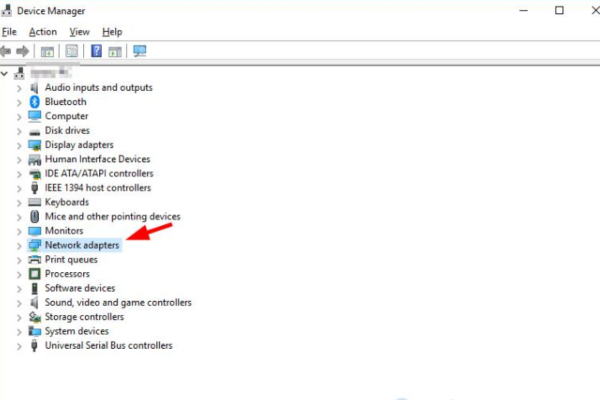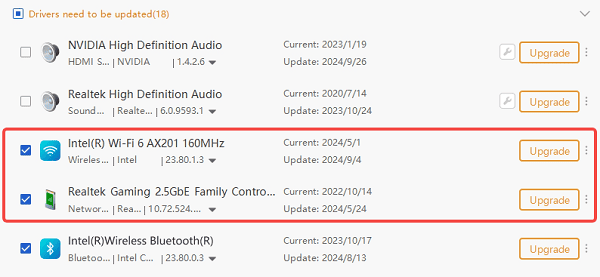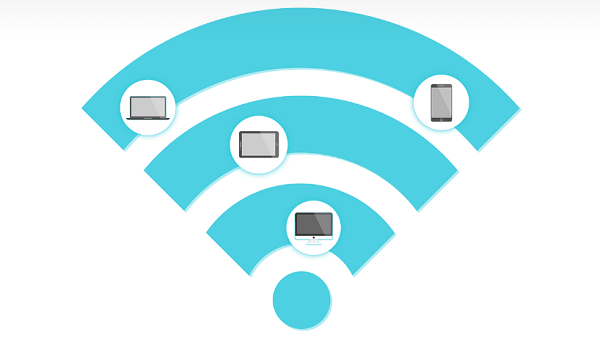Are you tired of being tied down by an Ethernet cable? Want to enjoy the freedom of your desktop computer wireless internet? Well, you're in the right place. Connecting desktop to a WiFi network isn't as hard as it sounds. In this guide, we'll walk you through the entire process of how to connect desktop to WiFi, from checking if your computer can even go wireless to fixing common issues.

How To Set Up Desktop Computer Wireless Internet?
Check Your Computer's WiFi Capability
The first step in getting desktop computer wireless internet is to find out if your desktop can connect to WiFi in the first place. Not all desktops are created equal when it comes to wireless connectivity.
Some newer, high-end desktop computers might have a built-in WiFi card. But if you've got an older model, chances are it doesn't. So, how do you check? It's easy. On your Windows computer, press the "Win + X" keys. This will bring up a menu. From there, select "Device Manager". In the Device Manager, look under "Network Adapters". If you see something like a "wireless network adapter", then your desktop has WiFi capabilities.

Another way is to check the manual or product specifications if you bought a branded desktop. These usually have all the details about what your computer can and can't do. If you don't find a wireless adapter in the Device Manager or the specs don't mention it, don't worry. There's still a way to get your desktop computer wireless internet.
Get an External Wireless Card
If your desktop computer doesn't have a built-in WiFi module, you'll need to get an external wireless card. There are two popular types:
USB Wireless Network Card
This is the simplest option. It looks like a USB flash drive. All that's required of you is to insert it into a USB port on your desktop. After that, you need to install the driver. PcGoGo Driver Sentry can automatically detect and update the driver for your USB wireless network card. It saves you the hassle of searching for the right driver online and reduces the risk of downloading the wrong one.
To use it, first, click the download button to get the latest version of PcGoGo Driver Sentry. Once it's installed, open the software and click "Scan". After the scan, it will show you which drivers need updating. Locate the network adapter driver within the list and click on the "Upgrade" button. When the update is done, restart your computer so the new driver can work properly.

PCI Wireless Card
If you're looking for a more stable connection, a PCI wireless card might be a better choice. But this one is a bit more complicated to install. You'll need to open up your desktop computer case and insert the card into a PCI slot on the motherboard. It's important to make sure you do this correctly. And just like with the USB wireless card, you'll need to install the driver. PcGoGo Driver Sentry can help with that too.
Connect Desktop to WiFi Network
Once you've got your wireless card installed and the drivers updated, it's time to learn how to connect desktop to WiFi network.
First, make sure your wireless network card is working. You may verify this in the Device Manager. If it's working properly, you should see it listed there without any issues. Some network cards come with their own software to manage the connection. Make sure you install and enable this software.
Next, look for the network icon in the bottom-right corner of your Windows taskbar. It usually looks like a WiFi signal. Click on it, and you should see a list of available WiFi networks nearby. Find the network you want to connect to and click on it. You'll be asked to enter the password. Remember to pay attention to the case and make sure there are no extra spaces.
After you enter the password, click the "Connect" button. The system will then try to connect to the WiFi network. If everything goes well, you'll see the network icon in the taskbar show a WiFi signal, and you're ready to start surfing the web.
Fix Common WiFi Connection Issues
Even after connecting your desktop to wifi, you might run into some problems. Here are some common issues and how to fix them.
Can't Find WiFi Network
If you can't find the WiFi network you want to connect to, there could be a few reasons. It might be that the driver for your wireless card isn't installed correctly. You can try reinstalling the driver using PcGoGo Driver Sentry. Another possibility is that the WiFi module on your card is turned off or there's a problem with your router. Check if your router is working properly.

Unstable WiFi Signal
An unstable WiFi signal can be really annoying. This might happen if your desktop computer is too far away from the router. Or maybe the wireless card you're using isn't very good. If that's the case, you can try replacing the wireless card with a stronger one. You can also try moving your router to a more central location in your home.
Incorrect WiFi Password
If you get a message saying the password is incorrect, double-check it. Passwords are case-sensitive, so make sure you're typing it exactly as it should be.
Slow Network Connection
If your WiFi connection is working but the network is slow, try restarting your router. Sometimes, other devices on your network might be using up a lot of bandwidth. Check which devices are connected and see if you can limit their usage.
Conclusion
Getting desktop computer wireless internet doesn't have to be a headache. By following these steps and using PcGoGo Driver Sentry to manage your drivers, you'll be enjoying a wireless connection in no time. If you run into any other problems, don't hesitate to do some more research or ask for help.